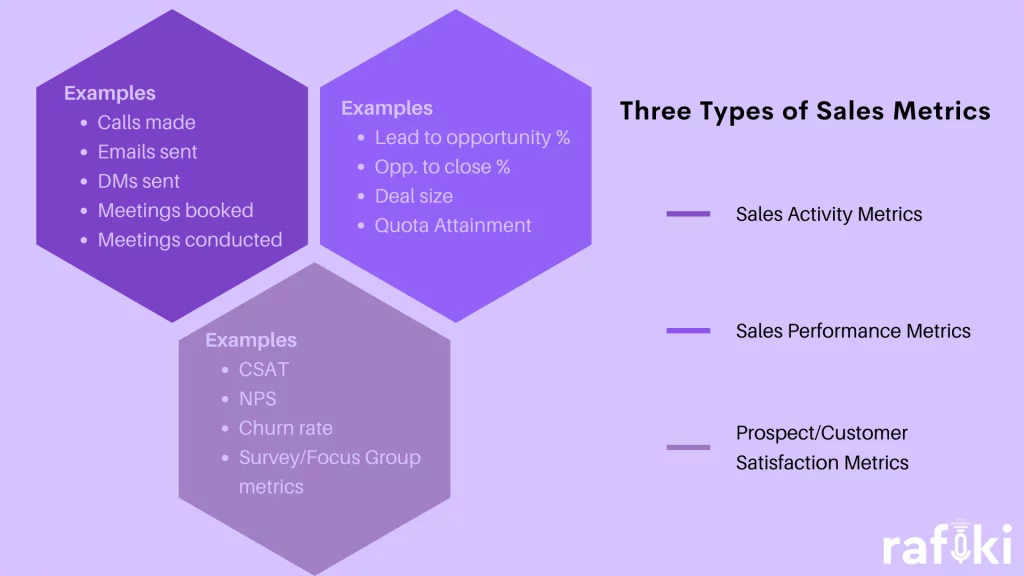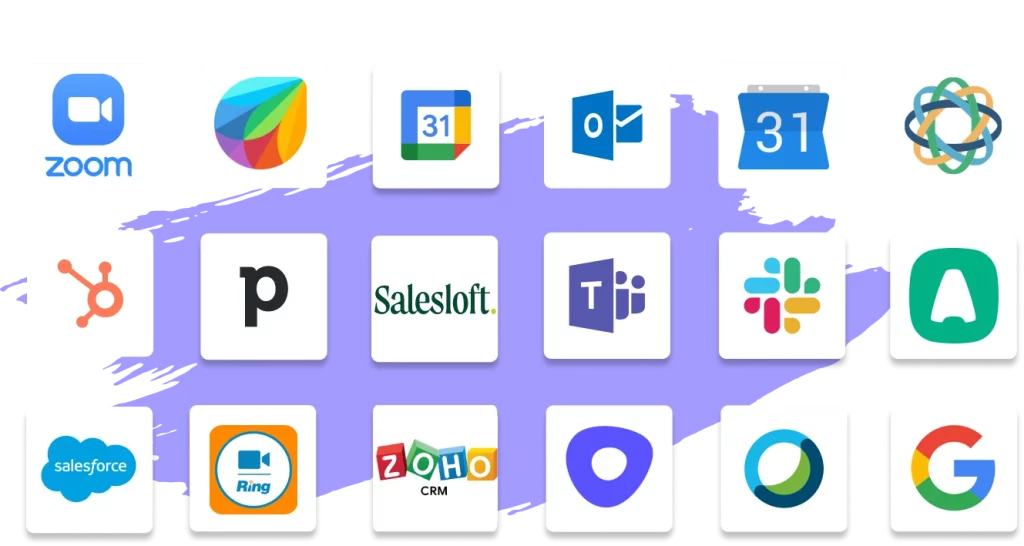Why Rafiki
Pricing


Pricing
Solutions

RevOps Leaders
Synchronize revenue generating functions

SDR Leaders
Get your team aligned and Coach your Reps 3x faster at scale

Sales Leaders
Unlock pipeline truth, drive confident forecasts

Ever feel like you're flying blind when it comes to your sales team's performance? You're not alone. Many sales leaders struggle to navigate the sea of data available, unsure of which metrics truly matter and how to leverage them effectively. This guide will equip you with the knowledge and tools to transform data into actionable insights that drive success.
Sales metrics are essentially the quantifiable measurements that track your team's progress towards achieving your sales goals. They're like the gauges on a dashboard, providing real-time feedback on things like revenue generation, activity levels, and customer satisfaction.
By keeping a close eye on these metrics, you can identify areas for improvement, celebrate wins, and ultimately steer your sales ship towards calmer waters, brimming with revenue and satisfied customers.
Imagine trying to navigate a maze blindfolded. It wouldn't be pretty, right? That's essentially what managing a sales team without metrics is like. Sure, you might stumble upon some successes, but it's a slow, inefficient, and ultimately frustrating process.
Sales metrics, on the other hand, are your guiding light in the maze. By tracking the right ones, you gain valuable insights into:
While the abundance of sales metrics can feel overwhelming, remember, "less is more." Focusing on the wrong ones leads to confusion, wasted resources, and ultimately, hinders progress.
So, how do you choose the right metrics for your unique situation?

The metrics crucial for a B2B software company might not be as relevant for a retail store. Consider the specific dynamics of your industry and tailor your metrics accordingly. For example:
Business model matters too. Are you a subscription-based service, a product-driven company, or do you offer professional services? Each model has its own unique set of success metrics:
Don't forget about your team type. Inside sales teams focused on phone and email outreach might benefit from metrics like call duration and email response rate. Field sales teams, interacting with clients face-to-face, might find metrics like number of meetings held and meeting conversion rate more valuable.
Leading indicators are proactive metrics that predict future performance. They provide early warnings of potential problems or opportunities, allowing you to take corrective action before it's too late. Examples include:
Lagging indicators, on the other hand, are reactive metrics that reflect past performance. They tell you what has already happened, such as:
While lagging indicators are valuable for measuring overall performance, they can't tell you the "why" behind the numbers. The true power lies in combining both leading and lagging indicators. By analyzing them together, you can gain a holistic understanding of your sales pipeline's health and make informed decisions to optimize your sales strategy.
For instance, a lagging indicator like declining revenue might be concerning, but by analyzing leading indicators like reduced website traffic or fewer qualified leads generated, you can identify the root cause and take proactive steps to address it. This could involve ramping up marketing efforts to generate more leads or refining your sales process to improve conversion rates.
Now that you understand the different types of metrics and their purposes, let's delve into the three core categories that form the foundation of any effective sales measurement system:

These metrics quantify the efforts your sales team puts into the sales process. They provide insights into the quantity and quality of activities undertaken to generate leads, nurture prospects, and close deals.
These metrics measure the outcomes of your sales efforts. They reveal how effectively your team is converting leads into customers and generating revenue.
These metrics gauge the level of satisfaction your prospects and customers have with your interaction and overall experience. They play a crucial role in building long-term relationships and fostering customer loyalty.
By tracking and analyzing all three categories of metrics, you gain a comprehensive understanding of your sales funnel's health, identify areas for improvement, and ultimately drive sustainable growth. Keep in mind, it's not just about the quantity of activity or the immediate outcome, but also about the quality of the experience and building long-term customer relationships.
Implementing a robust sales metrics system is crucial, but it's only half the battle won. To truly unlock the power of data, you need to cultivate a data-driven sales culture. This means fostering an environment where your sales reps:
Rafiki's Smart Call Scoring, for example, can be a valuable tool in nurturing this data-driven culture. By objectively evaluating each rep's performance across calls, deals, and accounts, Rafiki provides clear, actionable feedback that empowers reps to identify areas for improvement and take ownership of their performance. This fosters a culture of continuous learning and growth, ultimately leading to a more data-savvy and successful sales team.
Manually collecting and analyzing data can be time-consuming and error-prone. Fortunately, numerous technology solutions can alleviate these burdens and empower you to leverage data effectively.
Here's what to consider when choosing the right tools:
The right technology shouldn't just collect data – it should transform it into actionable insights that drive informed decision-making and propel your sales team towards achieving their goals.
Rafiki, for example, seamlessly integrates with popular CRMs like Salesforce and HubSpot, automatically capturing key call data like qualification methodology data to keep your CRM data pristine. This eliminates manual data entry and empowers you to gain valuable insights into your sales conversations, identify trends, and optimize your sales strategy for improved performance.

Rafiki Integrations
So, you've chosen the right metrics, fostered a data-driven culture, and implemented the appropriate tools. Now comes the crucial step: transforming data into actionable insights that drive measurable improvements in your sales team's performance.
Here's how to bridge the gap between data and action:
The world of sales is constantly evolving, and the way we measure success is no exception. As we move into 2024 and beyond, several key trends are shaping the future of sales metrics:
Rafiki, with its advanced AI capabilities, is already at the forefront of these trends. Rafiki's Smart Call Summary goes beyond summarizing conversations; it analyzes sentiment and tone, providing valuable insights into customer emotions and potential concerns. This empowers you to tailor your approach and address customer needs more effectively, fostering stronger relationships and driving long-term customer loyalty.
Armed with the knowledge and tools discussed, you're well on your way to leading your sales team towards data-driven success. Here are the key takeaways:
Gain clarity on everything sales
By following these steps and embracing a data-driven approach, you'll be well-equipped to unlock the full potential of your sales team. Remember, Rafiki can be your valuable partner in this journey, providing automated call summaries, smart follow-up emails, and objective performance scoring, all designed to empower you with the insights and tools needed to drive consistent sales growth and achieve your business objectives.
Sign up for a free 14 day trial now!